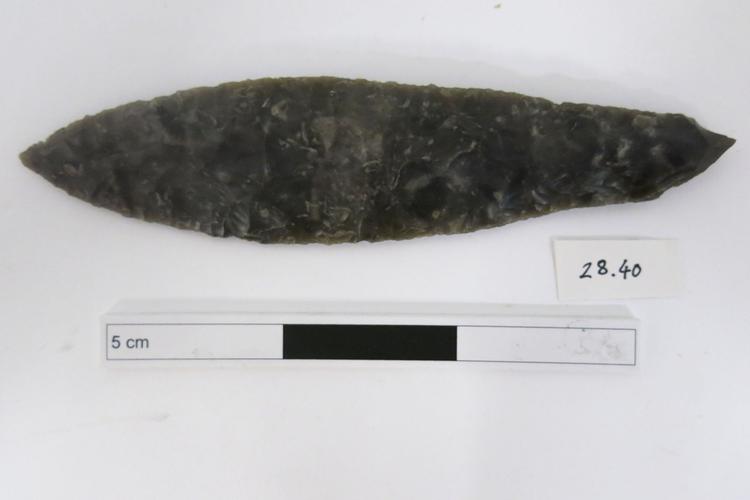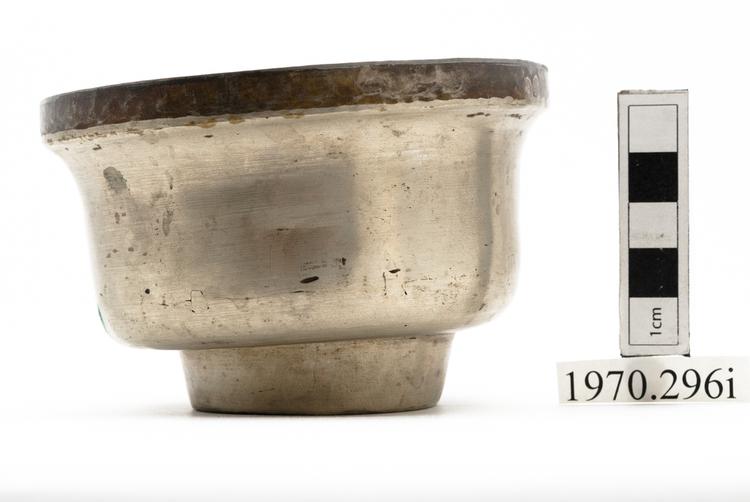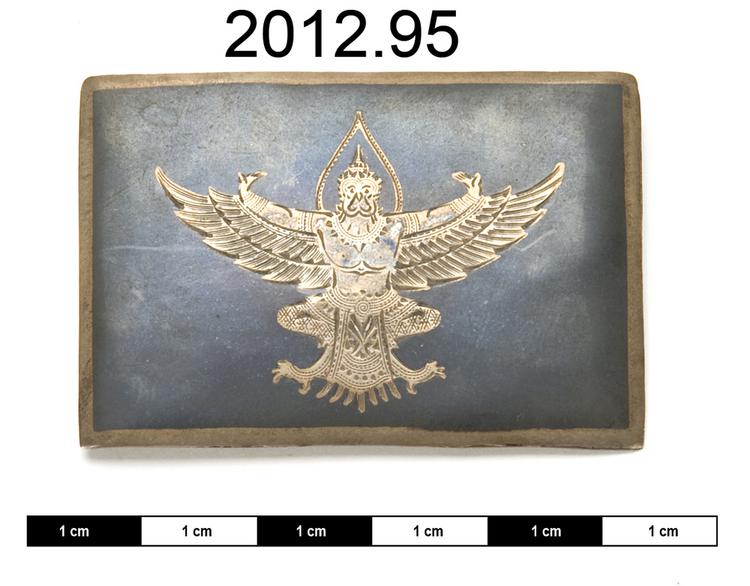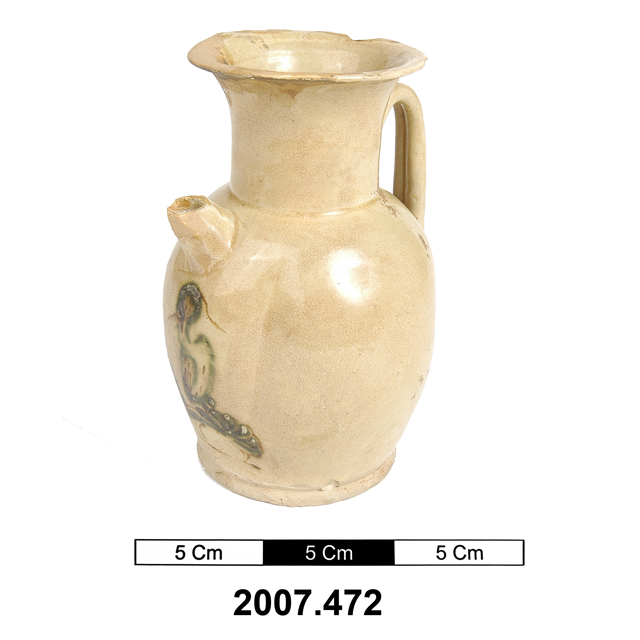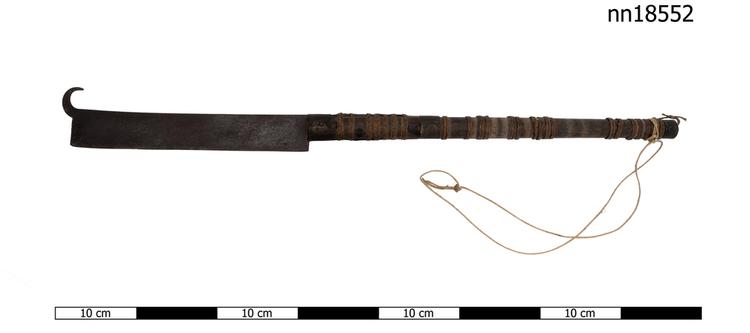
Composite weapon produced in Samoa from an imported English bill hook blade hafted onto a longer wooden handle. The whole handle was originally wrapped in an extensive coconut fibre binding which is now fragmentary. The local name 'nifo'oti' means 'tooth at the end'.
Hooked Steel Knife, Nifo‘oti, Samoa, Western Polynesia Samoan weapons known as nifo‘oti (‘tooth at the end’) come in two main forms: as hooked, rectangular steel blades with wooden handles, and as one-piece serrated wooden clubs of similar shape. The hook is the tell-tale sign of this weapon style’s complex history, and the blade of this example is punched ‘Joseph Beal, ENDURE, Sheffield’. An almost identical nifo‘oti, with a steel blade also manufactured by Beal’s of Sheffield, is also on display at the Pitt Rivers Museum in Oxford. These objects were the product of two cultures in collision: one Samoan, the other English. The blade was forged in northern England, and takes the traditional form of a Yorkshire bill-hook, a hedging tool. The hook at the end of the blade is invaluable to the English hedger, as it allows them to grab and drag thorny blackthorn, hawthorn and blackberry branches into position without putting down their chopping tool, or risking getting spiked. When imported into Samoa, such blades were undoubtedly useful for similar horticultural tasks, although they were logically also used in battle. Relying on misrepresentative stereotypes, late 19th Century Western writers bizarrely suggested that this hook was placed on the knife to allow the Samoan warrior to pierce his enemy under the ribs and pull them out of the front rank (matatau) of the opposing army, or for piercing severed heads to carry them from the battlefield. It would be impossible to hook anyone under the ribs with such a tool before getting killed oneself, and the Samoan people had given up taking enemy heads as war-trophies by the time this object was traded into the islands. Steel, wood. Mid-19th century. Provenance unknown.
fighting



